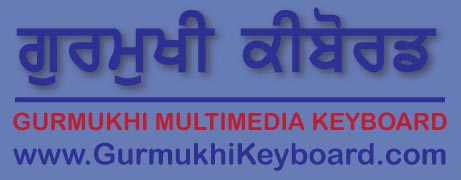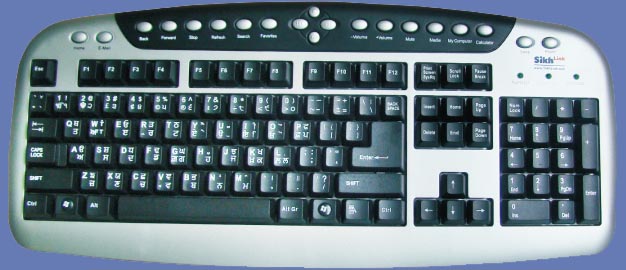INTRODUCTION TO UNICODE GURMUKHI
Why Unicode Gurmukhi?
What is Unicode?Unicode provides a unique number for every character, no matter what the platform, no matter what the program, no matter what the language. The Unicode Standard has been adopted by such industry leaders as Apple, HP, IBM, JustSystems, Microsoft, Oracle, SAP, Sun, Sybase, Unisys and many others. Unicode is required by modern standards such as XML, Java, ECMAScript (JavaScript), LDAP, CORBA 3.0, WML, etc., and is the official way to implement ISO/IEC 10646. It is supported in many operating systems, all modern browsers, and many other products. The emergence of the Unicode Standard, and the availability of tools supporting it, are among the most significant recent global software technology trends. Incorporating Unicode into client-server or multi-tiered applications and websites offers significant cost savings over the use of legacy character sets. Unicode enables a single software product or a single website to be targeted across multiple platforms, languages and countries without re-engineering. It allows data to be transported through many different systems without corruption. The Unicode Consortium is a non-profit organization founded to develop, extend and promote use of the Unicode Standard, which specifies the representation of text in modern software products and standards. The membership of the consortium represents a broad spectrum of corporations and organizations in the computer and information processing industry. Founded in 1991 following several years of informal cooperation, the Unicode Consortium continues to develop and promote The Unicode Standard, aid in its implementation, and works to maintain quality control over future revisions to the Standard. The Unicode Consortium brings together software industry corporations and researchers at the leading edge of standardizing international character encoding. The outcome of this cooperation is the Unicode Standard, which provides the foundation for internationalization and localization of software. Unicode is a 16 bit standard that allows use of more than 65000 characters in one font. It has support for major Indic (Indian) scripts that include Devanagari (Hindi, Marathi, Sanskrit), Bengali (Bengali, Assamese), Gurmukhi (Punjabi), Gujarati, Oriya, Tamil, Telugu, Kannada and Malayalam. Microsoft Windows XP/ Vista has full support for Indic scripts, including Gurmukhi. All future development regarding scripts will be based on Unicode. Visit unicode.org for more information on the unicode consortium and standard. Please support us in promoting the Gurmukhi/Punjabi Unicode!! |
| |||||||||



